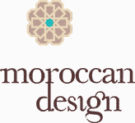About Us
For more than 700 years, North Africa and Andalusia experienced one of the most prosperous and glittering periods of their economic and spiritual civilization. Great metropolises like Casablanca, Fez, Cordoba, Marrakech, Malaga, Algiers, Tangier, Granada and Tunis are today’s witnesses to this unique period of history.

The apogee of Moorish architecture was reached in the 13th and 14th cent. with the luxurious palace-fortress, the Alhambra, the only large-scale domestic complex preserved from the first thousand years of Islam, and the madrasahs (schools) of Fès, celebrated for their delicately worked lacy wooden carvings.
In these centuries when Spain wrested itself from Moorish domination, the Christians nevertheless showed their admiration of the great Islamic edifices and decoration in their development of Mudéjar art, work made by and for Christians in the Moorish style. An example is the 14-century alcazar of Seville, whose flat, intricately carved surfaces are typical of Moorish façades. In Moorish sculpture, stone and wood carving were used mainly as architectural ornament. Many charming ivory boxes remain, which are adorned with scenes of court life or floral and animal motives; boxes were also made of precious metals.
Filigreed, inlaid, and enameled jewelry, as well as textiles and rugs, were produced in Moorish Spain. The steel of Toledo was famed throughout the Middle Ages. Moorish pottery was of high quality. Lusterware continued to be manufactured. The “Alhambra jars,” distinguished by their wing handles, are decorated with golden-brownish designs on a white background with touches of blue. By the 15th cent. Málaga was noted throughout the Christian world for its gold lusterwares.
The Columbia Encyclopedia, Sixth Edition. 2001-05